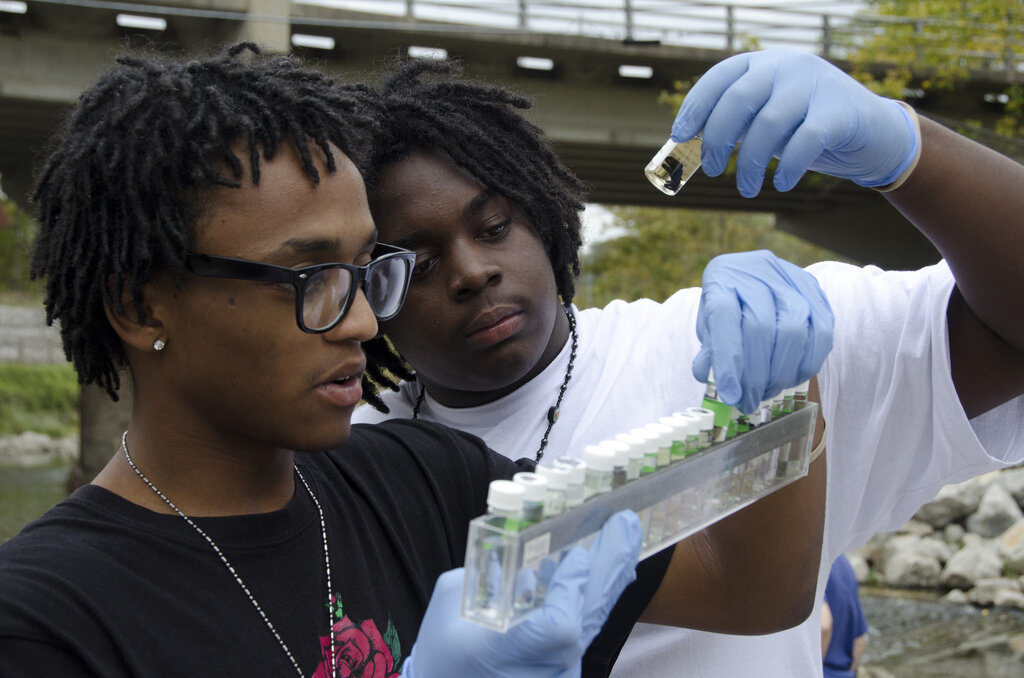Over the decades federal and state agencies have set standards for water quality in lakes, streams and rivers, and they rely on routine water testing to stay on top of things.
Commonly these government agencies, along with non-profit lake associations and watershed groups, send out teams of two or three people to test water quality and then send samples to laboratories for further analysis.
Depending on location, sample-collectors can face moderate hazards – up around where I live in New Hampshire they include poison ivy and ticks. Those threats are manageable.
But what happens when the hazard is a dread disease for which there is no cure?
In some states this spring and summer, water quality monitoring in lakes and streams by government staff has been suspended or curtailed. And in other situations non-profit watershed groups have either stopped sending out volunteers or otherwise insisted that the teams that go out are comprised of only people who live together.
Adjusting to the coronavirus has been a job. Here’s an excerpt from a report by New Hampshire’s Department of Environmental Services, which ordinarily oversees a robust monitoring program in lakes and streams:
“(Protecting against Covid-19) meant reconfiguring the lab where thousands of samples are processed each summer, obtaining sanitizing agents, masks, and putting in place limitations on shared vehicle use…Lake and river sampling by staff was reduced by one-third overall. Fecal bacteria monitoring for approximately 80 freshwater beaches was suspended pending further consideration, and aquatic plant services were cut in half…
“Last, because of the majority disruption to our field operations and logistic challenges, we have reduced our intern training program from 15 to 4 individuals for summer 2020.”
Similar adjustments can be found in the non-profit sector. Kathryn Nelson, the head of the Nashua River Water Association in Massachusetts, told me:
“Monitors are now required to be cohabitating pairs and we have drop off of samples at our parking lot to a cooler with social distancing. The wastewater treatment plants that we used for labspace are not open to the public so a staff person has set us the testing equipment at her house. We are fortunate to have our own testing equipment and not rely on a lab. We are only testing for E.coli bacteria for this year.”
For most people the immediate consequence of this reduced monitoring is, well, manageable. Mostly what people worry about is E.coli in the water. That’s something that regular lake or river monitoring can pick up. But most people know – or ought to know – that fecal bacteria in swimming places is generally a temporary thing, just three days of contamination following hard rains. So, avoid swimming for several days.
But regular water quality testing can also pick up longer-term threats. For example, George May, the president of the Souhegan Watershed Association (a New Hampshire group that incidentally has suspended volunteer water-testing this year) told me of a time half-a-dozen years ago when water tests picked up high E.coli count that couldn’t be attributed to hard rains. He went looking upstream and discovered a Port-a-Potty that had fallen into the river.
There are a couple of lessons to be drawn from all this, the first being that water quality testing in the United States is widely practiced, and another being that the people who oversee the testing are resourceful and committed to the task.
An equally important lesson is that volunteers play a key role in water quality testing. As many as 100,000 trained volunteers around the country monitor streams and lakes looking for such things as temperature, dissolved oxygen, bacteria, lead, road salt contamination, invasive vegetation and so on.
It’s a citizen science thing whose origins go way back to the private sector in the 1920 when the Izaak Walton League in Chicago began the practice and later refined it into a celebrated program that’s called Save Our Streams.
Want to get involved? Easy. Just Google “volunteer stream water quality testing (your state)”and see what comes up. Properly organized and supervised, it can be safe, and it can have a positive impact, particularly at a time when government-conducted testing is being temporarily scaled back.
